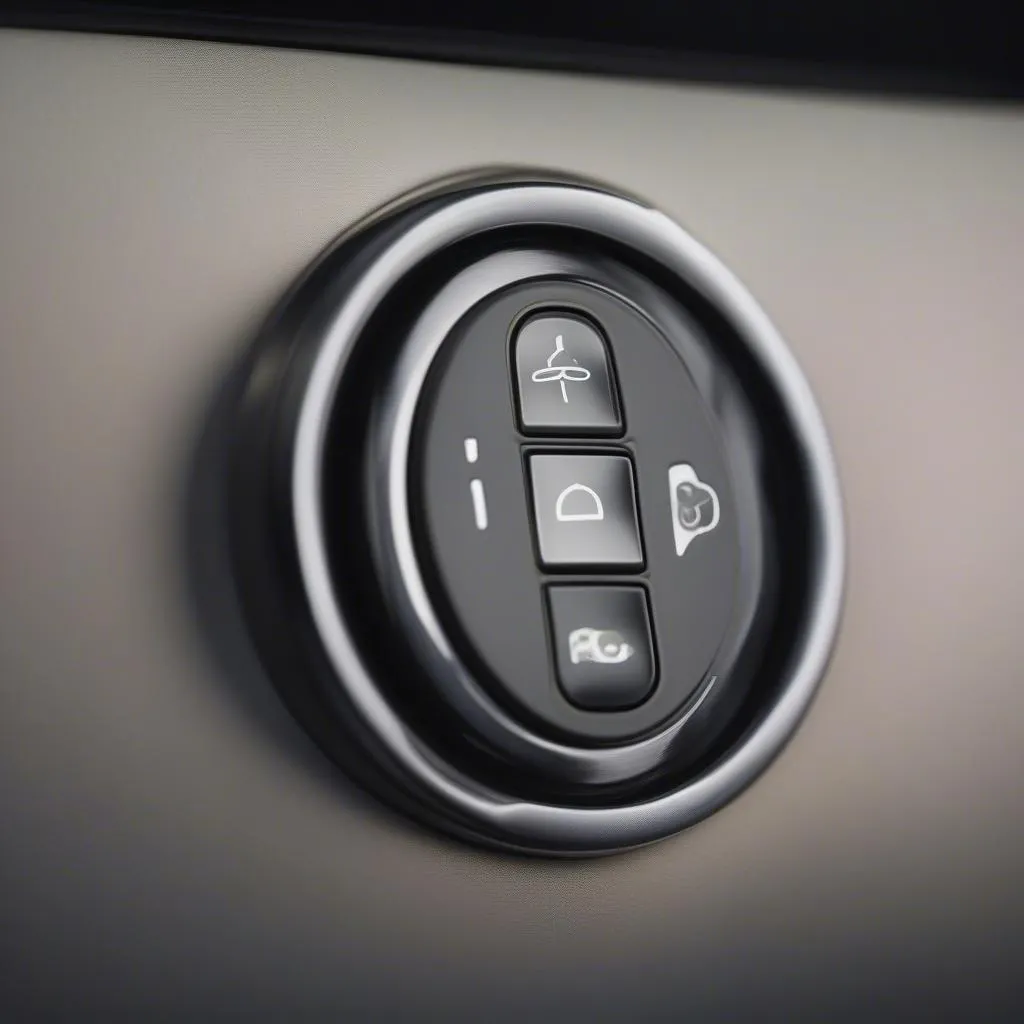Your Ford F-150’s brake warning light is on, and you’re understandably concerned. This light can signal a variety of issues, ranging from a minor inconvenience to a serious safety concern. Fortunately, understanding the potential causes can help you address the problem quickly and safely.
Common Reasons for the F-150 Brake Warning Light
The brake warning light serves as a crucial indicator for your Ford F-150’s braking system. Here are some of the most common reasons why this light might stay on:
1. Low Brake Fluid
One of the most frequent culprits behind a brake warning light is low brake fluid. Brake fluid is essential for maintaining pressure in your braking system, and a shortage can cause the light to illuminate.
“Low brake fluid is a common issue that often causes the warning light to come on,” says John Smith, a certified Ford technician with over 20 years of experience.
What to do:
- Check the brake fluid reservoir. It’s located under the hood, typically near the master cylinder.
- Top off the fluid if it’s low. Make sure to use the correct type of brake fluid as recommended by your F-150’s owner’s manual.
2. Faulty Brake Pad or Shoe Sensors
Brake pads and shoes have wear sensors that trigger a warning light when the pads or shoes are nearing the end of their lifespan. This is a vital safety feature, as worn-out brake pads can lead to reduced stopping power and potential damage to the brake rotors.
“Always pay attention to the brake warning light, especially if you hear any grinding or squeaking sounds when braking,” warns Mary Jones, a Ford parts specialist.
What to do:
- Inspect your brake pads or shoes. You can visually check their thickness.
- Replace worn pads or shoes promptly. Don’t neglect this, as it can lead to more serious damage to your brake system.
3. Issues with the Electronic Brake Control Module (EBCM)
The EBCM plays a crucial role in managing your F-150’s anti-lock braking system (ABS) and other electronic brake functions. A malfunctioning EBCM can cause a brake warning light to stay on, even if there’s no actual issue with the brakes themselves.
“A faulty EBCM can be a complex issue, but diagnosing and replacing it should always be done by a qualified technician,” advises Robert Davis, an automotive diagnostic specialist.
What to do:
- Get your F-150 diagnosed by a trusted mechanic. They will use diagnostic tools to check the EBCM for any faults.
- Replace the EBCM if necessary. This might involve a significant repair cost, but it’s important to address any electrical problems in your braking system.
4. Problems with the Parking Brake
A malfunctioning parking brake can also trigger the brake warning light. This could involve issues with the parking brake cable, the parking brake actuator, or a faulty parking brake switch.
What to do:
- Ensure your parking brake is fully released. If it’s engaged, the light might be a normal indication.
- Check the parking brake cable for wear or damage.
- If you suspect a problem with the actuator or switch, consult a mechanic for diagnosis and repair.
Troubleshooting the F-150 Brake Warning Light
While it’s tempting to try and fix the brake warning light yourself, it’s best to leave this job to a qualified mechanic.
Here’s why:
- Safety: Your braking system is vital for safe driving. Improper repairs could lead to dangerous consequences.
- Complexity: Modern braking systems are highly sophisticated. Diagnosing and fixing issues requires specialized tools and expertise.
- Warranty: If your F-150 is still under warranty, unauthorized repairs could void the warranty.
Frequently Asked Questions
1. What does it mean if the brake warning light is flashing?
A flashing brake warning light usually indicates a problem with the anti-lock braking system (ABS). It’s important to get your F-150 checked by a mechanic as soon as possible.
2. Can I drive with the brake warning light on?
It’s generally not advisable to drive with the brake warning light on, especially if you notice any changes in braking performance. However, you may be able to drive a short distance to a safe location if the issue is minor.
3. How much does it cost to fix the brake warning light?
The cost of repair depends on the underlying cause. Minor issues, like low brake fluid, can be addressed at a relatively low cost. However, complex issues like a faulty EBCM could require a significant repair bill.
4. What is the best way to prevent brake warning light issues?
Regular maintenance is crucial for preventing brake warning lights. This includes:
- Checking brake fluid levels regularly.
- Having your brake pads and shoes inspected during routine maintenance.
- Using a reputable mechanic for all brake repairs.
5. Should I get a second opinion if a mechanic tells me I need a new EBCM?
It’s always a good idea to get a second opinion, especially for major repairs. Another mechanic can provide a fresh perspective and may be able to offer alternative solutions.
In Conclusion
The brake warning light in your F-150 is a critical indicator of potential issues in your braking system. Addressing it promptly is essential for your safety and the longevity of your vehicle. When in doubt, it’s always best to consult a trusted mechanic for a professional diagnosis and repair.

